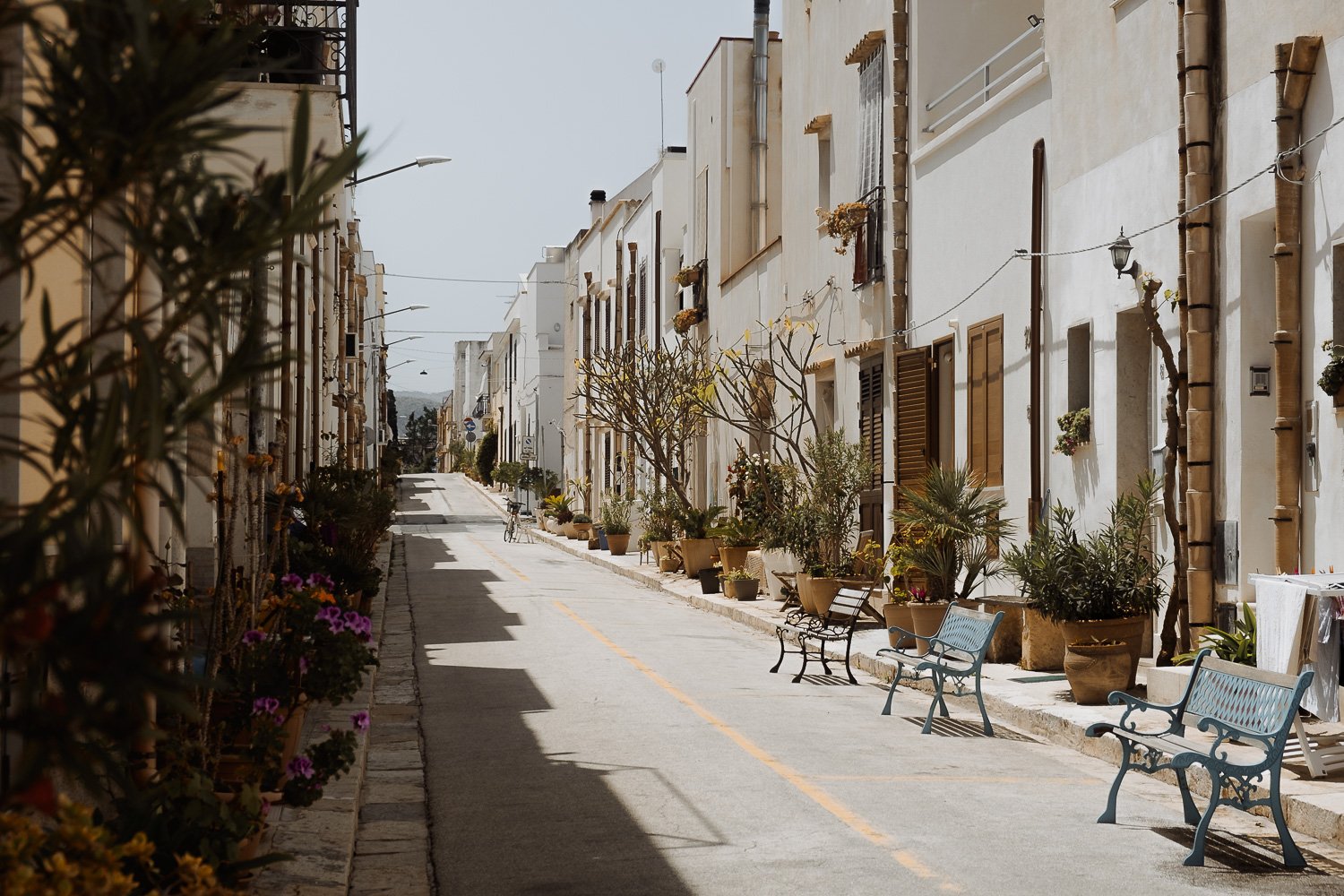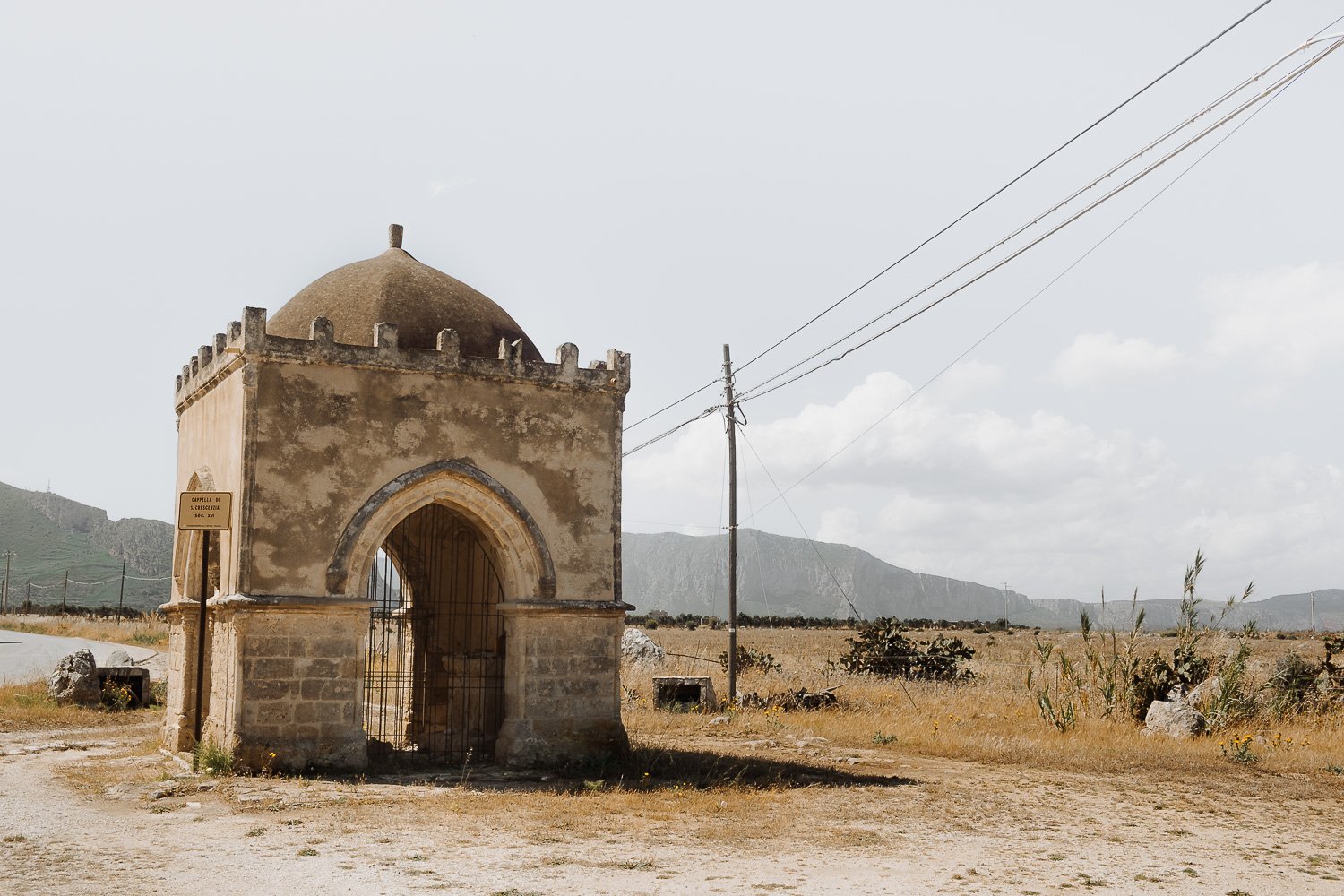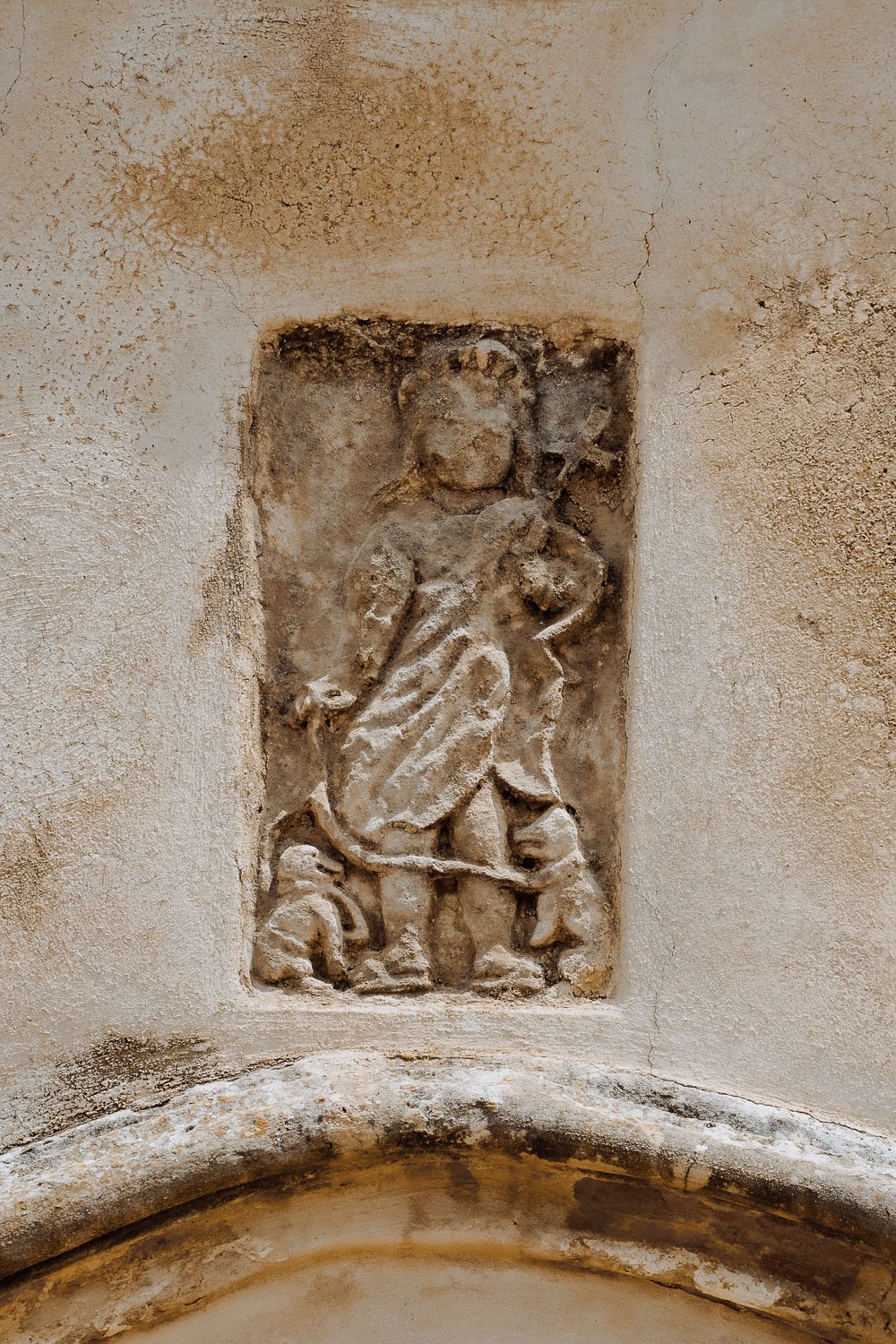San Vito lo Capo: the Sicilian Caribbean
For me, Sicily has all the ingredients for a perfect holiday: a rich history, delicious food, beautiful nature, and some of Italy's most beautiful beaches. One of these beautiful beaches can be found in San Vito lo Capo, situated on the island's northwestern coast. The stunning white sandy beaches of San Vito lo Capo and the light colors of the waters will make you feel like being somewhere in the Caribbean.
But the town has more to offer than just a splendid beach. In this mini-guide, I will tell you more about the best things to see and do in San Vito Lo Capo.
Cozy colourful street in San Vito lo Capo
One of the town's main streets slowly comes to life after a beach day
#1 Cappella di Santa Crescenzia
Let's start with the popular legend of San Vito. As you approach the village via the SP16, you will come across a small chapel. It is the Cappella di Santa Crescenzia (Google Maps), one of the main monuments of San Vito Lo Capo.
Legend has it that the young Vito, the son of a Roman high official, had to flee his hometown to escape the persecutions ordered by emperor Diocletian. He fled with his nurse Santa Crescenzia and his tutor Modesto, who had converted him to Christianity.
Cappella di Santa Crescenzia
After a few days of sailing, a storm forced Vito's ship to land in a gulf protected from the wind by Monte Monaco. Once arrived, the three tried to convert the inhabitants of Conturrana (a small village that stood not far from the sea) to Christianity. The inhabitants were not too happy about this, and they forcibly drove Vito, Crescenzia and Modesto out of the village. But by doing so, they incurred God's wrath, and the town was buried under a landslide.
Some say that during her flight, Crescenzia looked back to see God's punishment. Out of fear of what she saw, she was petrified. It reminds me of the biblical story in which God destroys Sodom and Gomorrah as punishment for the immorality of their people. Just before the destruction of Sodom, Lot and his family were told to flee and not look back. However, Lot's wife did look back and immediately changed into a pillar of salt.
The chapel's altar (left), and a bas-relief on the backside of the chapel (right)
In the 13th century, a chapel was built right on the spot where Crescenzia was petrified and where the landslide stopped. The Chapel of Santa Crescenzia. What characterizes the chapel is the Arabic architectural style. Still, other cultural influences, especially Gothic and Norman, can be spotted as well.
Interesting fact: according to an ancient belief, you have to throw a stone inside the chapel to banish fears. However, the altar has been nearly destroyed in the past due to this custom. So please, be careful and respect the monument.
#2 San Vito Beach
The many beautiful beaches and crystal-clear waters make San Vito lo Capo the ideal place to spend a long holiday.
The most popular and main beach is the San Vito beach (Google Maps). This long stretch (nearly three kilometers) of white sand beach is located at the foot of Monte Monaco. It has been awarded the 'Blue Flag' several times. This label is given to coastal resorts that meet certain quality standards for bathing water and general services. Currently (2022), the beach does not have this status though. But nevertheless, it remains a wonderful place to enjoy the sun and sea!
Image text
To see the splendor of the beach, I recommend visiting San Vito lo Capo outside the summer season. In the summer (especially July-August), much of the space is taken up by private beaches. At the same time, the free beach areas are invaded by hordes of people. When I visited San Vito lo Capo in early May, I had the beach almost all to myself, and the sea was warm enough to swim in.
Image text
Image text
If you're up for something different, visit the beach of Bue Marino (Google Maps) just outside San Vito Lo Capo. This pebble beach is usually quieter than the more crowded beach or San Vito Lo Capo. Thanks to the Bue Marino beach's beauty, the beach has won the title of 'Most Beautiful in Italy' in 2016.
#3 Santuario di San Vito
Situated right in the heart of San Vito lo Capo you will find a sanctuary dedicated to San Vito Martyr. The originally 4th-century building immediately catches the eye because it resembles an imposing fortress.
Image text
In addition to religious components such as the church's rose window, its niches, and the bell tower, the structure also shows elements that indicate a military past. For example, take a look at the tower with merlons facing the sea.
Except for the central chapel of San Vito, the church doesn't look very spectacular from the inside. In the main chapel stands a statue of the young San Vito. Around him are statues of several other saints.
Image text
From the chapel, you can enter a hypogeum. Down in the hypogeum, a silver reliquary is said to house a piece of the saint's skull.
The Museo del Santuario can be visited via the side of the Santuario di San Vito. One of the museum's most important works is the 15th-century wooden statue of the Immaculate Conception. Unfortunately, the museum was temporarily closed during my trip.
Image text
Open: Mon - Sun 8:00 to 23:00
Entry fees: Entrance to the church is free
#4 The Lighthouse
While enjoying your holiday on the San Vito beach, I'm sure you'll notice the silhouette of the town's lighthouse in the distance (Google Maps). The San Vito lighthouse, or Faro di Capo San Vito, dates back to 1859 during the rule of the House of Bourbon. It is one of the oldest lighthouses in the Mediterranean.
Lighthouse of San Vito lo Capo
The lighthouse consists of a white, 40-meters-high, cylindrical tower with a balcony and lantern. The lantern is attached to the front seaside, and its beam of light covers about 19 nautical miles (35 kilometers).
You will hardly find any tourists in the area around the lighthouse. This makes it the place to enjoy the extraordinary panorama of the Gulf of San Vito Lo Capo in peace. Especially around sunset the atmosphere and the view are absolutely magical!
Lighthouse of San Vito lo Capo
#5 Tonnara del Secco
Up until the mid-20th century, tuna fishing was one of Sicily's primary sources of income. The tuna was caught using a system of fixed nets and large underwater traps. This thousand-year-old method entailed the construction of large buildings (called 'tonnare') appropriate to the productive cycle.
Today, fishing is mainly carried out by modern fleets. But although the Sicilian tonnare no longer perform their original function, many of the architectonic vestiges are still visible along the island's coast. They remain a precious testimony to the culture of Sicily.
Image text
About three kilometers east of San Vito lo Capo you can find one of the old tonnare: the Tonnara del Secco (Google Maps). Although the complex is in disrepair, you get a sense of the once crowded warehouses, shelters for boats, apartments for the crew, and the plant where the tuna was processed. If you are interested in the history of Sicily, a visit to the Tonnara del Secco (or one of the other tonnare) should not be missing from your itinerary.
Image text
Image text
Next to the Tonnara del Secco there is a small, quiet beach. An excellent opportunity to combine your visit with some sunbathing and swimming!
Image text
#6 Zingaro Nature Reserve
Just a few kilometers away from San Vito lo Capo (15 minutes by car) is the beautiful Zingaro Nature Reserve (Google Maps). This stretch of nature (seven kilometers) along the coastline is basically untouched by human construction and development. No wonder it is one of the most admired natural gems in Sicily.
Image text
Several hiking trails run through the nature reserve. During your hike you will come across several prehistoric caves, colorfull Mediterranean vegetation, and several small bays with white pebble beaches. This means there is plenty of opportunity to relax and take a refreshing dip in the inviting waters.
The Zingaro Nature Reserve has all the ingredients for a truly unforgettable day-trip!
Image text
Image text
#7 Grotta Mangiapane
If you're looking for an 'off the beaten path' side trip from San Vito lo Capo, consider visiting the Grotta Mangiapane. It is one of nine caves known as the Grotte di Scurati. The Scurati Caves form an ancient settlement that dates back to the Upper Paleolithic period (40,000 to 10,000 years ago)!
Image text
The Grotta Mangiapane includes a tiny village made up of charming earth-colored houses, a small chapel, a wood oven, and some stables. The village was inhabited by the Mangiapane family from 1819 until the 1950s.
Image text
After a period of neglect and decay, the village and its picturesque houses have been restored by locals. The result is absolutely stunning! Would you like to visit the Grotta Mangiapane yourself? Make sure to also take a look inside the cave. There, you'll find workplaces and homes with their original tools and furniture. It definitely makes you feel like going back in time!
Image text
Open: Wed - Mon 10:00 to 18:00 (from April to November)
Entry fees: Entrance to the Grotta Mangiapane is €3,-
#8 Eating couscous
Most of San Vito lo Capo's restaurants have couscous (with fish) on their menu. But wait.. Isn't couscous a North African dish? That's right, but as odd as it may sound, couscous is also the local specialty of San Vito. The town even hosts an annual Cous Cous Fest.
The festival takes place in September and is the highlight of the year. During this culinary feast, chefs from all over the world come to San Vito lo Capo to create the most delicious couscous.
Getting hungry now and looking for a restaurant? I recommend going to Trattoria du Lantirneri (Google Maps). I loved their couscous, and the staff is really friendly.
Fish couscous at Trattoria du Lantirneri




















